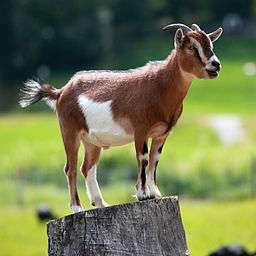His
His is the possessive form of he.
His or HIS may also refer to:
HIS (automotive group)
HIS (Herstellerinitiative Software, German for 'OEM software initiative') is an interest group consisting of the car manufacturers Audi, BMW, Daimler AG, Porsche and Volkswagen.
Innovation in modern vehicles is to a great extent realized by software in electronic control units. Therefore, vehicle manufacturers must extend their competence in the basics and methods of software design and quality assurance for microprocessor based control units. This has motivated the companies mentioned before to bundle their activities as long as they are not relevant for competition.
HIS only works on topics which can be handled within a timeframe of up to 2 years. The common goal is to achieve and use joint standards, either by supporting standardization bodies, or where they do not exist, by developing standards. Work is performed in working groups which are established when needed. Significant work has been performed e.g. in the areas of standard software modules, process maturity levels, software test, software tools and programming of control units.
Kid
Kid(s) may refer to:
Common meanings
As a nickname
Proposed top-level domain
The Domain Name System of the Internet consists of a set of top-level domains which constitute the root domain of the hierarchical name space and database. In the growth of the Internet, it became desirable to expand the set of initially six generic top-level domains in 1984. As a result new top-level domain names have been proposed for implementation by ICANN. Such proposals included a variety of models ranging from adoption of policies for unrestricted gTLDs that could be registered by anyone for any purpose, to chartered gTLDs for specialized uses by specialized organizations. In October 2000, ICANN published a list of proposals for top-level domain strings it had received.
Geographic proposals

Goat
The domestic goat (Capra aegagrus hircus) is a subspecies of goat domesticated from the wild goat of southwest Asia and Eastern Europe.
The goat is a member of the family Bovidae and is closely related to the sheep as both are in the goat-antelope subfamily Caprinae. There are over 300 distinct breeds of goat. Goats are one of the oldest domesticated species, and have been used for their milk, meat, hair, and skins over much of the world. In 2011, there were more than 924 million live goats around the globe, according to the UN Food and Agriculture Organization.
Female goats are referred to as "does" or "nannies", intact males as "bucks", "billies", or "rams" and their offspring are "kids". Castrated males are "wethers". Goat meat from younger animals is called "kid" or cabrito (Spanish), and from older animals is simply known as "goat" or sometimes called chevon (French), or in some areas "mutton" (which more often refers to adult sheep meat).
Etymology
The Modern English word goat comes from Old English gāt "she-goat, goat in general", which in turn derives from Proto-Germanic *gaitaz (cf. Dutch/Icelandic geit, German Geiß, and Gothic gaits), ultimately from Proto-Indo-European *ǵʰaidos meaning "young goat" (cf. Latin haedus "kid"), itself perhaps from a root meaning "jump" (assuming that Old Church Slavonic zajęcǐ "hare", Sanskrit jihīte "he moves" are related). To refer to the male, Old English used bucca (giving modern buck) until ousted by hegote, hegoote in the late 12th century. Nanny goat (females) originated in the 18th century and billy goat (for males) in the 19th.
Podcasts:

